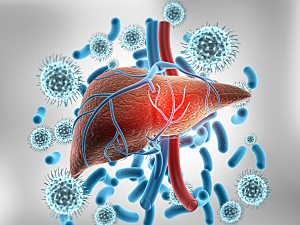High-grade hepatitis is a common adverse effect of cancer therapy with immune checkpoint inhibitors (ICIs). Major society guidelines recommend high-dose systemic corticosteroids (1–2 mg/kg/day methylprednisolone equivalents), followed by the addition of a second immunosuppressive agent if the biochemical improvement is insufficient after three to five days.
These recommendations are based on expert consensus. For better-informed management, researchers at Brigham and Women’s Hospital conducted the first study to compare the outcomes of different steroid dosing regimens prescribed for patients with high-grade ICI hepatitis.
In Hepatology, Stephen D. Zucker, MD, director of the Hepatology Program in the Division of Gastroenterology, Hepatology and Endoscopy, Shilpa Grover, MD, MPH, founder and director of the Onco-Gastroenterology Program, Michael Li, MD, MPH, a fellow in gastroenterology, and colleagues present evidence for starting with the lower dose.
Methods
The retrospective study included 215 cancer patients (excluding those with hepatocellular carcinoma) who received ICI therapy complicated by grade ≥3 hepatitis between January 2010 and December 2020. ICI hepatitis was defined as a hepatocellular pattern of injury with alanine aminotransferase (ALT) >200 U/L in the absence of other probable causes of liver injury.
Patients were stratified by initial steroid dose: <1.5 mg/kg methylprednisolone equivalents (n=128) or ≥1.5 mg/kg (n=87).
ALT Normalization
Even after multivariable adjustment, treatment with ≥1.5 mg/kg methylprednisolone equivalents was not associated with a shorter time to ALT normalization (HR, 1.02; P=0.903).
Similar results were obtained using a propensity score model that matched the two dosing groups on nine covariates (HR, 1.09; P=0.610).
Secondary Outcomes
On multivariable-adjusted or propensity score–matched analyses, the higher-dose group was not superior to the lower-dose group in:
- Time to ALT improvement to <100 U/L: HR, 1.07 (P=0.695)
- Rate of ALT improvement in the first week of steroid treatment: −8.72 U/L (P=0.140)
- Risk of developing steroid-refractory disease: OR, 1.22 (P=0.365)
Other Outcomes
Compared with the lower-dose group, patients in the ≥1.5 mg/kg group:
- Required significantly longer courses of steroid therapy
- Were significantly more likely to develop hyperglycemia requiring treatment
- Were significantly more likely to develop an infection
Of the 128 patients in the lower-dose group, 26 (20%) were escalated to a dose ≥1.5 mg/kg. 61.5% of them eventually required the addition of a second immunosuppressive agent.
Proposal for a Change in Practice
These results support a shift to a lower initial steroid dose. At Brigham and Women’s Hospital, patients with grade 3/4 ICI hepatitis now typically receive a starting dose of 1 mg/kg/day methylprednisolone equivalents.
If there is an insufficient biochemical improvement at that dose after no more than one week, the risks of initiating a second immunosuppressive agent are weighed against the risk of dose escalation.
